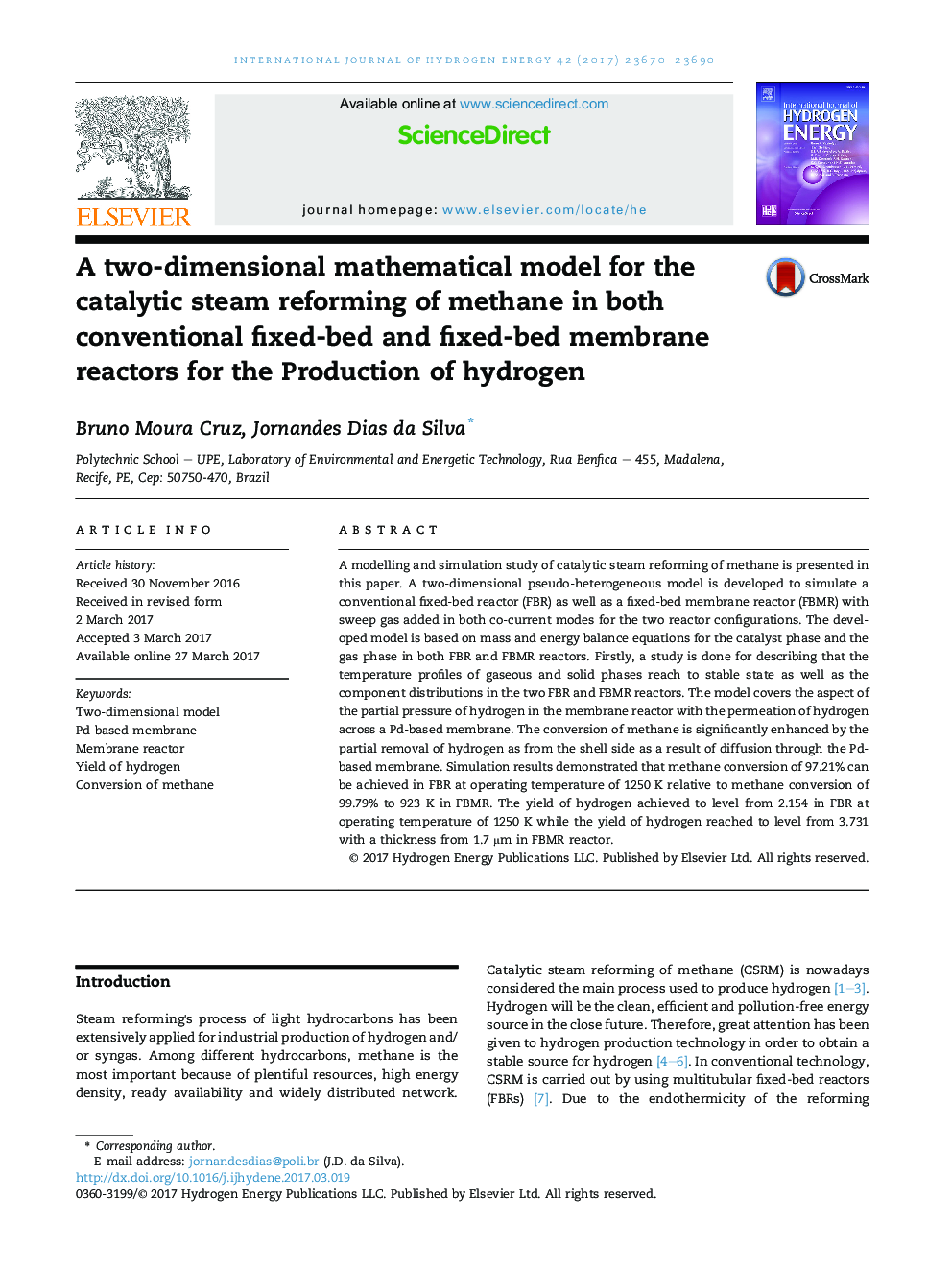| Article ID | Journal | Published Year | Pages | File Type |
|---|---|---|---|---|
| 5145536 | International Journal of Hydrogen Energy | 2017 | 21 Pages |
â¢Two-dimensional pseudo-heterogeneous model in both FBR and FBMR reactors.â¢Partial pressure of hydrogen with hydrogen permeation in radial direction.â¢Catalytic steam reforming of methane with nickel catalyst (Ni(6.7 %wt.)/γ â A2O3).â¢Conversion of CH4 is enhanced due to the shift by the thermodynamic equilibrium.
A modelling and simulation study of catalytic steam reforming of methane is presented in this paper. A two-dimensional pseudo-heterogeneous model is developed to simulate a conventional fixed-bed reactor (FBR) as well as a fixed-bed membrane reactor (FBMR) with sweep gas added in both co-current modes for the two reactor configurations. The developed model is based on mass and energy balance equations for the catalyst phase and the gas phase in both FBR and FBMR reactors. Firstly, a study is done for describing that the temperature profiles of gaseous and solid phases reach to stable state as well as the component distributions in the two FBR and FBMR reactors. The model covers the aspect of the partial pressure of hydrogen in the membrane reactor with the permeation of hydrogen across a Pd-based membrane. The conversion of methane is significantly enhanced by the partial removal of hydrogen as from the shell side as a result of diffusion through the Pd-based membrane. Simulation results demonstrated that methane conversion of 97.21% can be achieved in FBR at operating temperature of 1250 K relative to methane conversion of 99.79% to 923 K in FBMR. The yield of hydrogen achieved to level from 2.154 in FBR at operating temperature of 1250 K while the yield of hydrogen reached to level from 3.731 with a thickness from 1.7 μm in FBMR reactor.
Graphical abstractDownload high-res image (228KB)Download full-size image
